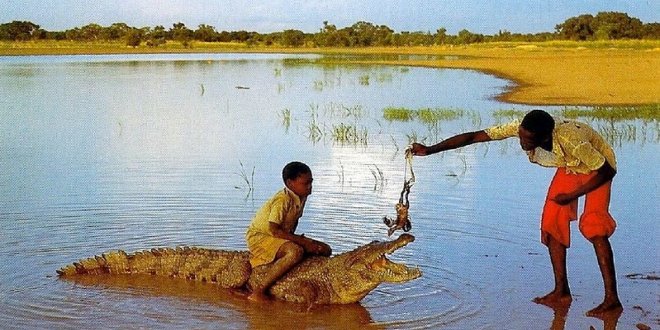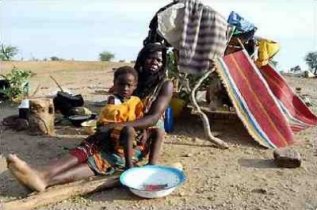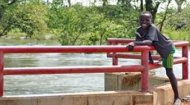|
Life in Chad is framed by a complex web of overlapping challenges. Decades of political instability, marked by coups and authoritarian rule, have hindered development and created an environment of uncertainty. The nation is situated in a volatile region, and its security is intrinsically linked to its neighbours, being constantly affected by the Boko Haram insurgency in the Lake Chad basin, the crisis in Sudan's Darfur region to the east, and instability in Libya to the north. This has resulted in Chad hosting one of the largest refugee populations in Africa, with over a million refugees and internally displaced persons seeking shelter within its borders. This influx places an immense strain on already scarce resources and services. Daily life in chad, especially in rural areas where over 75% of the population live, is dictated by the rhythm of the seasons and a clear division of labour. Men are typically responsible for tilling the fields, herding livestock such as cattle, camels, and goats, or engaging in trade. Women's days are equally demanding. They are the managers of the household, a role that includes the arduous tasks of fetching water from distant wells, gathering firewood, preparing meals, and raising children. This communal effort ensures the survival and cohesion of the family. Hospitality is a sacred duty, and a guest, no matter how humble their host, will always be offered water and a place to rest. Despite being an oil-producing nation, wealth has not trickled down to the general population. As well as this oil, the economy remains heavily dependent on agriculture, making it vulnerable to climate shocks and fluctuations in global commodity prices. In 2022, Chad's national poverty rate was 44.8%, indicating that nearly half of the population lived below the national poverty line, a significant increase from previous years. As of 2024, the extreme poverty rate was 36.5% ($2.15/day per capita), which also saw a notable rise with most of this poverty concentrated in rural areas. Rural water access in Chad is severely limited due to widespread lack of infrastructure, poverty, arid climate, and inadequate maintenance, especially in dispersed rural communities. While some progress has been made through initiatives like the Rural Drinking Water and Sanitation Programme (PAEPA), a significant portion of the rural population, potentially around 57% or more, still lack access to basic safe water, leading to preventable waterborne diseases, with diarrhea causing a significant number of annual deaths, particularly among young children. Many who do have some access to water are normally reliant on water wells, many of which were built in the 1960s. Others, despite living close to rivers, report, "the primary need that we have, it's the need for wells in the villages. Although we live along the Chari River, we find that the water we draw from the river makes us sick. Especially between the months of March and May, when the river dries up a bit, diarrhoea spreads in the region, and causes many deaths. Water is essential to life, but if the water source is polluted, this puts our entire population in danger, especially the children." Indeed healthcare provision is almost non existent for the people of Chad, along with an absence of any social security program in the country. As one Chadian noted, "the most common medical problems that the people of my region experience are these: snake and scorpion bites, malaria, diarrhoea and dysentery, meningitis, conjunctivitis, bronchitis and pneumonia, and hernias." Health outcomes for children in Chad are poor. The child mortality rate is among the world's highest, with the most recent estimates placing the under-five mortality rate around 101 to 114 deaths per 1,000 live births, with one out of every six children dying before the age of five because of disease and malnutrition impeded further by limited accessibility to child healthcare services such as immunisation, ante and post-natal care. |
Life in Chad |
Life in Chad |
Life in Chad | Life in Chad |
Find out all about Chad in a series of information articles, latest daily news, videos, and images.
More >
|
|

|
Very few people in Chad have access to electricity; running at an estimated 10%, with rates as low as 0.6% to 2% in some rural areas, significantly below the Sub-Saharan Africa average. To address this, the Chadian government is implementing programs like the National Emergency Electricity Plan and has secured funding with the help of the World Bank to increase overall access, with a target of 20% rural access by 2030. High energy costs and a nascent off-grid solar market remain significant barriers. Instead of this electric supply, most Chadians burn wood and animal manure for power.
A typical Chad rural scene would comprise an unpaved road full of animals, motos, bicycles and people mixed together with little shacks by the 'roadside' operating as 'corner' stores ~ Chad has 20,753 miles of roads of which only 166 miles are paved, mainly in the capital. Educational outcomes are also poor for the people of Chad with an adult literacy rate of 27.28% in 2022, making it one of the lowest in the world, and those children who do go to school have around seventy children per teacher and classroom. As another Chadian remarked, "The primary need that we would like to mention [ ... ] is the need for schools that are accessible to the entire rural population. There are not any schools on the north bank of the Chari River. Only those who live in Kokaga or in Sarh can send their children to school. This situation leads to the displacement of the Tounia to urban centres." And it is to those urban centre's like the country's capital N'Djamena, that many people in Chad turn, if nothing else, than for safety. Religion is not just a belief system in Chad; it is woven into the very fabric of daily life. The country sits at a cultural crossroads, and its religious landscape reflects this. Approximately 55-60% of the population is Muslim, predominantly in the northern and eastern regions. Their lives are often structured around the five daily prayers, and Islamic festivals like Eid al-Fitr are major national celebrations. The southern part of the country is largely Christian, comprising about 35-40% of the population, with both Catholic and Protestant denominations present. There, Sunday church services and holidays like Christmas and Easter are central to community life. Importantly, these Abrahamic faiths often coexist and blend with traditional animist beliefs. Many Chadians, regardless of their declared religion, may still consult traditional healers or believe in the power of spirits and ancestors. This syncretism highlights a pragmatic and inclusive approach to spirituality. For the most part, religious groups coexist peacefully, though regional and political tensions can sometimes be framed along religious lines. Perhaps no single factor impacts daily life in Chad more profoundly than climate change as the country is one of the most vulnerable in the world to its effects. The most visceral example is the catastrophic shrinking of Lake Chad (see main article on our Chad peofile page). Once one of Africa’s largest freshwater lakes, it has lost over 90% of its surface area since the 1960s due to climate change, unsustainable water management, and prolonged droughts. This environmental disaster has had a devastating human cost. Millions of fishermen and farmers who depended on the lake for their livelihoods have been displaced or impoverished. The relentless advance of the Sahara Desert - desertification - further degrades agricultural land, making farming increasingly difficult. This scarcity of resources, particularly water and grazing land, fuels violent conflicts between sedentary farmers and nomadic herders, adding another layer of insecurity to daily existence. The video of Chad (above, left) shows its people at work, play and going about their daily lives. It is not shown to demonstrate that maybe life in Chad isn't so bad after all, but to exemplify how people, however poor and facing limited life opportunities, can smile in the face of adversity and make the most of what they have. |







 Housing in Chad varies dramatically between urban centres and rural villages. In the capital, N'Djamena, can be found modern concrete buildings and government offices, but a large portion of the urban population lives in sprawling, densely packed neighbourhoods. Homes there are often simple, constructed from concrete blocks or mud bricks with corrugated metal roofs. In rural areas, dwellings are ingeniously adapted to the local climate and available materials. They are typically round huts made of clay or mud bricks with thatched roofs (see below), known as sai, which keep interiors cool, although, more recently, some brick buildings are being developed. In the arid north, nomadic communities often live in portable tents made from animal hides or woven mats.
Housing in Chad varies dramatically between urban centres and rural villages. In the capital, N'Djamena, can be found modern concrete buildings and government offices, but a large portion of the urban population lives in sprawling, densely packed neighbourhoods. Homes there are often simple, constructed from concrete blocks or mud bricks with corrugated metal roofs. In rural areas, dwellings are ingeniously adapted to the local climate and available materials. They are typically round huts made of clay or mud bricks with thatched roofs (see below), known as sai, which keep interiors cool, although, more recently, some brick buildings are being developed. In the arid north, nomadic communities often live in portable tents made from animal hides or woven mats.


